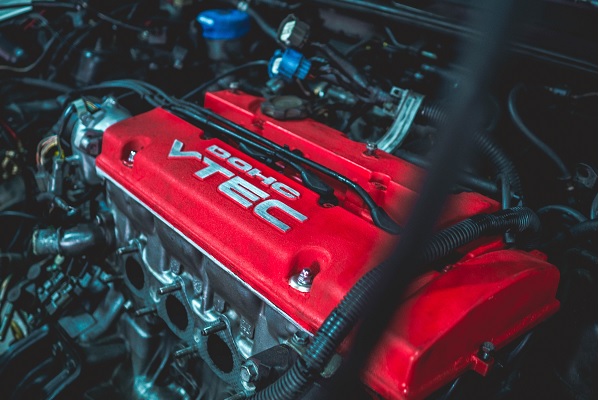The JPMorgan Dynamic Blend Index and the Citi Dynamic Asset Selector 5 ER Index are both rules-based, volatility-controlled indices frequently used as underlyings for structured products.
The JPMorgan Dynamic Blend Index is a multi-asset strategy that seeks to capture positive market momentum while managing volatility. The index has an equity constituent (J.P. Morgan US Large Cap Equities Futures Index) and a bond constituent (J.P. Morgan 2Y US Treasury Futures Index ) and varies exposure between the two based on a dynamic rules-based allocation with a target volatility of 3%. The index is calculated on an excess return basis and has an annual deduction of 0.95%.
The construction of this portfolio compared to some custom indices is relatively straightforward. There are only two assets and the allocation will depend on a momentum strategy based on historic volatility.
Product landscape: JPMorgan index-linked notes
There are 113 products linked to this index on structuredretailproducts.com as at the beginning of 1st July 2025. These account for a total of 23.28 million USD in sales volume. All the products are issued by JPMorgan Chase Financial and are capital protected. There are three product types, leveraged growth, digital and autocall.
Recent examples of each type are firstly a three-year autocall (SRP id:52312511) paying a return of 10% after 1 year if index is greater than 0.5% of its initial level or 20% after 2 year if the index is up by more than 1%. If the product is not called the payoff is 100% of the growth in the index at maturity.
Secondly a three-year digital product (SRP id:52312610) paying 126% if the index is greater than its initial level at maturity. And finally a three-year leveraged growth product (SRP id:51265065) pays two times the index growth at maturity.
This spread of products gives a good range of payoffs on this index which should appeal to different investors. Of these products the most sensitive to volatility is the growth product because the underlying is required to grow for returns to be paid. The other two products require no or very modest growth to pay returns making them less sensitive to underlying volatility. All are capital protected which means there is no exposure to index volatility on the downside.
The volatility control mechanism is likely to constrain the growth potential of the underlying. The target volatility of 3% is significantly lower than a typical US stock index with the S&P 500 index currently having a one-year historic volatility of 19.74%. Therefore to hit this target volatility the JPMorgan Dynamic Blend index is generally likely to have a higher proportion invested in the bond constituent than the equity.
Product trends: Citi index-linked offerings
Alternative choice Citi Dynamic Asset Selector 5 ER Index is also linked to two underlyings; the S&P 500 Futures Excess Return Index and the S&P 10-Year U.S. Treasury Notes Futures Excess Return Index. The index has three possible portfolio allocations; 66.66% in the equity constituent and 33.33% in the treasury constituent, 33.33% in equity constituent and 66.66% in treasury constituent, or 100% invested in the treasury constituent. The weightings will be decided based on the historic volatility of the index and a momentum style trend signal. The target volatility of the index is 5% and it has a fee of 0.85% per annum.
There are 454 products linked to the Citi Dynamic Asset Selector 5 ER Index (structuredretailproducts.com as of 1st July 2025) with a notional of 770 million USD. The products linked to this index are also capital protected and the payoffs are mostly autocall or leveraged return. Almost half the products have long maturities of more than six years although many of these are autocallable and have the potential for early maturity.
Recent examples of products linked to this underlying include: a seven-year autocall product (SRP id: 52174220) paying 7.5% per annum if the index is greater than autocall levels starting at 100.5% in year two and rising by 0.5% per year to 103% at year six. If no call occurs and the product reaches maturity the investor will receive returns of 100% of the growth in the index. A recent leveraged return example pays 1.75 times index growth after one year.
Both constituent indices are calculated excess return and are linked to futures contracts on either equity or treasury bonds rather than actual stocks or interest rates. Indices based on futures contracts can be more complex than traditional stock-based indices. They reflect expectations in the underlying and involve roll and carry costs. However, they are generally easier and cheaper to hedge for this issuer which may in turn benefit the investor due to the reduced costs.
The JPMorgan Dynamic Blend and Citi Dynamic Asset Selector 5 ER indices demonstrate the increasing use of systematic, volatility-controlled strategies in structured products. Their rules-based frameworks and the use of futures provide controlled exposure with defined risk parameters. The suitability of products linked to these indices depends on an investor’s risk tolerance, return objectives, and a clear understanding of the underlying indices.
Tags: Structured EdgeImage courtesy of: Bit Cloud / unsplash.com












